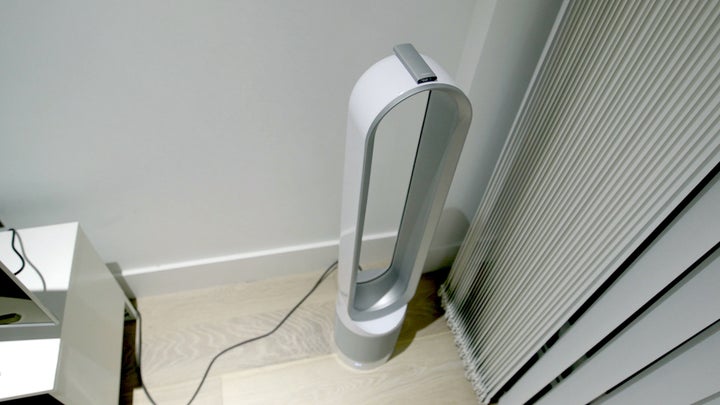When you think about the phrase air pollution it’s easy to immediately associate it with smog-filled cities, vast traffic jams and power plants pouring out harmful gases.
Yet there is another side to this global problem that we currently face and that is indoor air pollution.
Trapping not only the gases outside but also additional gases and particles that we create in our own homes, indoor air pollution is increasingly warranting more and more attention from both academics and the general public.
In order try and understand why it’s becoming more and more of a health concern, we set out to discover what was actually floating inside our houses, where it came from and whether or not it could be considered a health risk.

To do this, Dyson agreed to send us one of their Pure Cool Link air purifiers which sucks in the air around it, filters it using both a HEPA and activated carbon filter and then pumps clean air back into the room.
The purifier was then used for a period of around 12 months at the end of which we sent the filter to Dyson who analysed it themselves and then sent it off for independent testing.
The Results
After a month of testing we got the results back, revealing the sheer breadth of gases and particles floating around our homes.
Now individually, many of these compounds were found in extremely low levels, but when combined together and inhaled over a long period of time we know that this can have a detrimental affect on our health.
We know that particle sources like benzene and formaldehyde can cause dizziness, asthma or allergies when inhaled in large quantities. We also know that hydrocarbons from cooking oil can irritate the mucous membranes of the eyes, nose and throat while also causing headaches.
When all combined they target, in particular, those with long-term respiratory conditions, heart disease and asthma, making their symptoms considerably worse.
The Solution
Speaking to Sarah MacFadyen, Head of Policy at the British Lung Foundation there are small but important changes that we can make to lessen these effects.
These include: Keeping rooms well ventilated (even with the outdoors) when using products like hairspray, making sure that on low pollution days you keep fresh air cycling through into the property, using liquid surface cleaners (not spray cleaners) to reduce how much they enter the air and finally burning solid fuels such as wood burning stoves less or giving them up entirely.
In addition there has also been research that shows buying certain types of plants such as bromeliads can also lessen the effects of certain particles like benzene and formaldehyde and that yes, air purifiers can also scrub out many of the particles and gases that would otherwise be entering our bodies